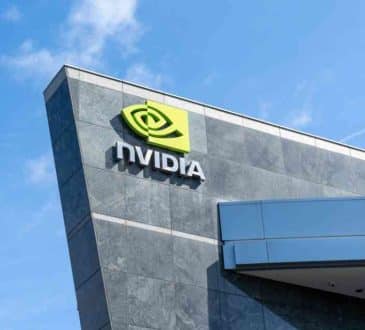The Ultimate Back-to-Work Checklist

Top 10 list of risk mitigation considerations for returning to the office. Are your office spaces ready for staffers to get back to work? As many business leaders are contemplating a return to work, it has become clear that the transition back to the workplace must be planned and adjustments must be made, to ensure a safe return.
Because of the virus, we must be prepared to re-imagine the way work will be performed as we return to the office. After all, it’s our responsibility as leaders to mitigate risks for all of our stakeholders, including staff, customers and suppliers, alike. There is much to consider as we do.
For example, our workplace transition plans must account for maintaining a culture of care, while driving performance. Indeed, we have to deliver on our product and service promises, while still driving operational excellence. Supplier relationships must be shored up, as well, because their products and services are vital to our business continuity.
Clearly, the back-to-work plan must be robust to cover all of these angles and be resilience-based, too. Certainly, if the back-to-school and college experience is any indication, our transition back to the office may come in fits and starts. So, our workplace transition plans must be able to withstand the test of time, as well.
Here’s a checklist that can help. The intention is to cover all of the major actions we can take to ensure as smooth a shift back to the workplace as possible without over-engineering the plan.
Workplace Transition Checklist
Top 10 list of risk mitigation considerations for returning to the office:
- Regional Readiness Assessment: The first item on the list involves assessing the rate of the infection in the region where the workplace is located. You shouldn’t open the doors if your situated in a “hot spot” Additionally, you’ll want to be aware of any travel restrictions that may hinder how the business operates.
- On-site Risk Management Oversight: Because the safety of in-person work is likely to be fluid for the near future, it’s important to establish an in-house control center that can monitor and manage each of your locations locally. This on-site oversight group can manage any developing situations and adjust back-to-work policies and protocols, as appropriate.
- Workforce Communications: With an oversight group in place, you can get to work on the creation and dissemination a communication package to staff, which outlines the policies and procedures that are expected to be followed as people return to the workplace. This package can accelerate the process, while helping to smooth their transition back to work.
- Workplace Redesign: While your people are digesting the workplace transition policies that were communicated, it’s time to reconfigure floor plans, install appropriate workspace separation and place any needed signage to manage foot traffic within each facility.
- Work Scheduling: You may want to explore the virtues of varying work schedules to better limit the potential of virus-spread among your team. If it’s deemed worthwhile, introducing a combination of relaxed work-from-home rules and staggered work schedules can serve to limit exposure risk and lessen the need for a full-out quarantine of staff, should a staffer become infected.
- Screening and Contact Tracing Operations: Daily temperature monitoring stations and procedures for contract tracing are established next. You want limit the potential of exposure by inadvertently allowing an infected staff member or visitor on premise. Also, should your people be exposed to virus while at work, you will want to have appropriate contact tracing protocols in place to manage further exposure.
- New Common Area Guidelines: Rules governing the use of common areas including water fountains, restrooms, cafeterias and coffee services need to be in place as workers return to the office. Safe distancing, face covering and cleaning regimen requirements must be covered in these guidelines.
- Work Process Restructuring: If work continued remotely since the pandemic began, it’s likely that you have already redesigned your workflow to accommodate distant workers. If not, you’ll want to invest in rethinking the way work will be divided and managed among in-office and remote workers. It is here that new teamwork and collaboration technology can be deployed to enable a seamless transition to the New Normal work setting.
- Performance Monitoring: All of these newly implemented workplace changes will likely require adjustments to existing performance monitoring practices. Any necessary tweaks need to be made as your team returns to work.
- Privacy Issues Strategies: Worker privacy needs to remain top of mind when defining any procedures and policies that may unintentionally disclose personnel data to others. Be sure to develop strategies that limit your risk in this regard.
To close, it’s true that in spite of everything we do to manage risk, something can still fall through the cracks. My hope is that this checklist will help you when crafting the “right” back-to-work plan for your specific business and it’s unique set of circumstances.
Here’s the latest list by the CEOWORLD magazine Rankings. Here’s what you’ve missed?
World’s Largest Megacities By Population.
World’s Safest Cities.
World’s Most Economically Influential Cities.
World’s Best Cities For Luxury Shopping.
Add CEOWORLD magazine to your Google News feed.
Follow CEOWORLD magazine headlines on: Google News, LinkedIn, Twitter, and Facebook.
This report/news/ranking/statistics has been prepared only for general guidance on matters of interest and does not constitute professional advice. You should not act upon the information contained in this publication without obtaining specific professional advice. No representation or warranty (express or implied) is given as to the accuracy or completeness of the information contained in this publication, and, to the extent permitted by law, CEOWORLD magazine does not accept or assume any liability, responsibility or duty of care for any consequences of you or anyone else acting, or refraining to act, in reliance on the information contained in this publication or for any decision based on it.
Copyright 2024 The CEOWORLD magazine. All rights reserved. This material (and any extract from it) must not be copied, redistributed or placed on any website, without CEOWORLD magazine' prior written consent. For media queries, please contact: info@ceoworld.biz
SUBSCRIBE NEWSLETTER








